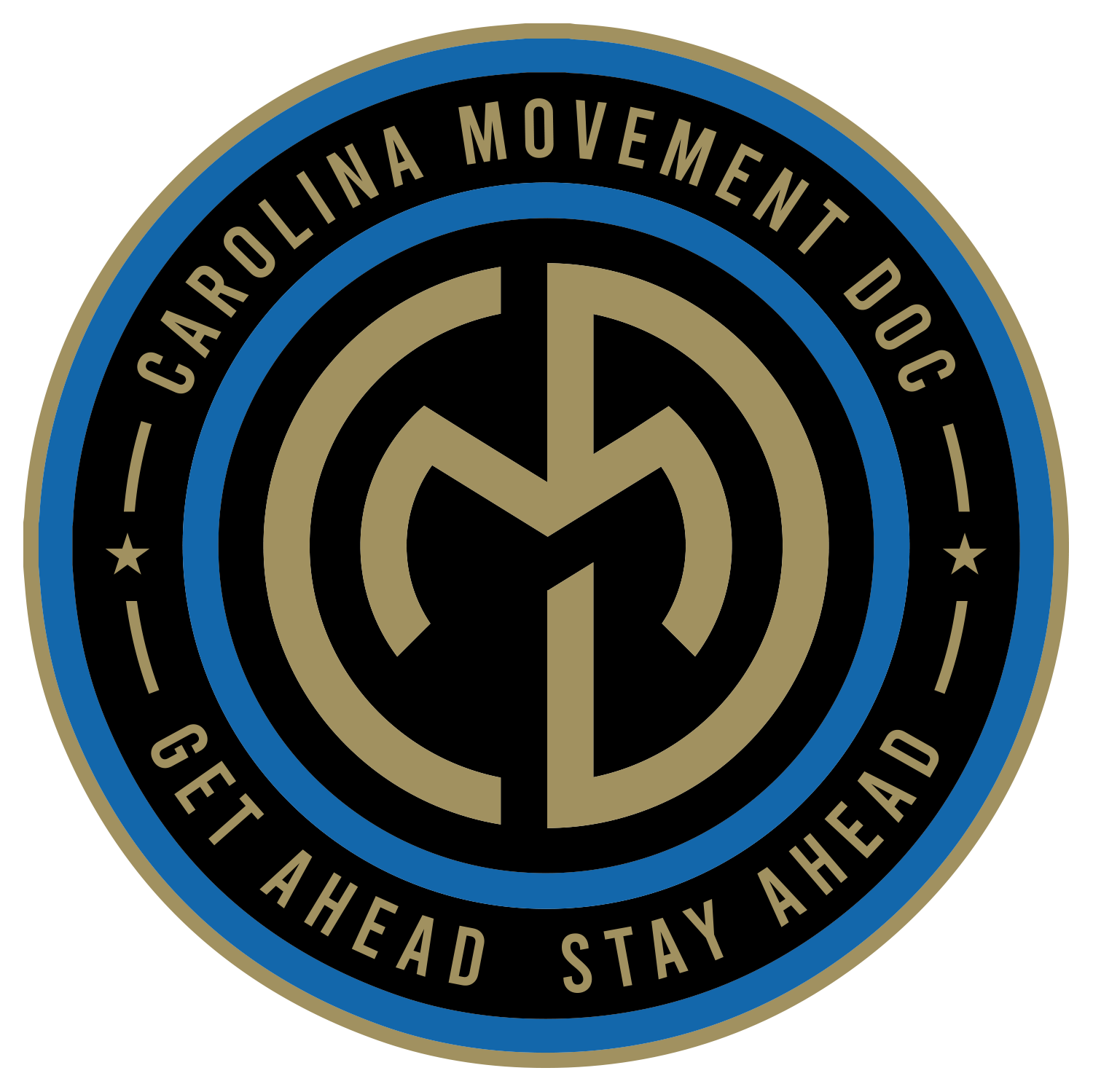🏌️♂️How to Stop Shoulder Pain After Your Round of Golf
By Dr. Griffin Love, PT, DPT, CSCS | TPI Certified Physical Therapy for Golfers
If your shoulders are aching by the time you finish 18 holes—or worse, if they’re barking at you on the front nine—you’re not alone. Shoulder pain is one of the most common complaints we see at Carolina Movement Doc, especially in golfers over 35 who play frequently but may not have the mobility, strength, or mechanics needed to support a full swing.
As a TPI-certified performance physical therapist, my job is to help you understand why your shoulder hurts, how to fix it, and—most importantly—how to keep it from coming back.
🎯 Common Causes of Shoulder Pain in Golfers
Before we talk about prevention, we need to understand the “why.” Most shoulder pain in golfers is caused by one (or more) of the following:
1. 🧱 Lack of Thoracic Spine (Mid-Back) Mobility
If your upper back can’t rotate well, your shoulder tries to do the job—and ends up taking the brunt of the twist during your backswing and follow-through.
2. 🦴 Poor Scapular (Shoulder Blade) Control
The shoulder blade acts as the foundation for the shoulder joint. If it’s not moving properly, your rotator cuff will overwork and eventually break down.
3. 💪 Weak Rotator Cuff or Core
If your shoulder muscles—or your core—aren’t strong enough to control rotation or deceleration, pain will show up during or after the round.
4. 🔁 Repetitive Overuse Without Recovery
Even the best swing can cause pain if you’re overloading tissue without giving it time to recover. Many amateur golfers play or practice without properly warming up, cooling down, or managing their training load.
✅ How to Stop Shoulder Pain After Golf
Let’s get practical. Here are the top four strategies we recommend to reduce or eliminate shoulder pain after your round:
1. 🔥 Warm Up Like an Athlete, Not a Weekend Warrior
Skipping your warm-up is like teeing off with cold engine oil. Try this quick dynamic series:
5-Minute Golf Shoulder Warm-Up
Arm Circles & Crossovers – 30 sec each
T-Spine Openers (Open Book Stretch) – 10 reps per side
Wall Angels or Band Pull-Aparts – 2 sets of 10
Torso Rotations with Club – 30 seconds
Hip Hinge to Shoulder Turn Drill – 10 reps
2. 🎯 Build Scapular Stability
The scapula is your swing anchor. Train it like one:
Best PT-Approved Drills:
Wall Slide with Foam Roller
Prone I-Y-T Series
Serratus Punches with Band
Plank Plus (scapular push-ups)
3. 🧘♂️ Improve Mid-Back Mobility
If your T-spine doesn’t rotate, your shoulder will. Fix this imbalance with:
TPI Favorites for Thoracic Mobility:
Quadruped T-Spine Rotations – 10 each side
Thread the Needle Stretch – 30 sec hold per side
Foam Roller T-Spine Extensions – 10 reps
4. 🧊 Recover Smarter After Your Round
If you're feeling tight or sore post-round:
Try This 5-Minute Post-Round Cool Down
Doorway Pec Stretch – 30 sec
Cross-Body Posterior Shoulder Stretch – 30 sec
Child’s Pose with Reach – 30 sec per side
Light Band Rows or IR/ER movements – 2 sets of 10
Ice + Compression (if acute inflammation- ice bath if you have one)
🚩 When to See a TPI-Certified Physical Therapist
If shoulder pain:
Lingers more than 2–3 days
Gets worse the more you play
Is sharp, limits your backswing, or causes night pain…
…it’s time for an expert evaluation. At Carolina Movement Doc, we combine Titleist Performance Institute movement screens with physical therapy evaluation to uncover the root cause, whether it’s mechanical, mobility-related, or strength-based.
🏌️♀️Final Thoughts
Your shoulder shouldn’t pay the price for your love of golf. With the right movement prep, mobility work, and performance therapy, you can swing with power—without pain.
Ready to take your swing (and shoulder health) to the next level? Schedule a TPI Golf Movement Assessment with us at Carolina Movement Doc and keep your game—and body—in peak condition
